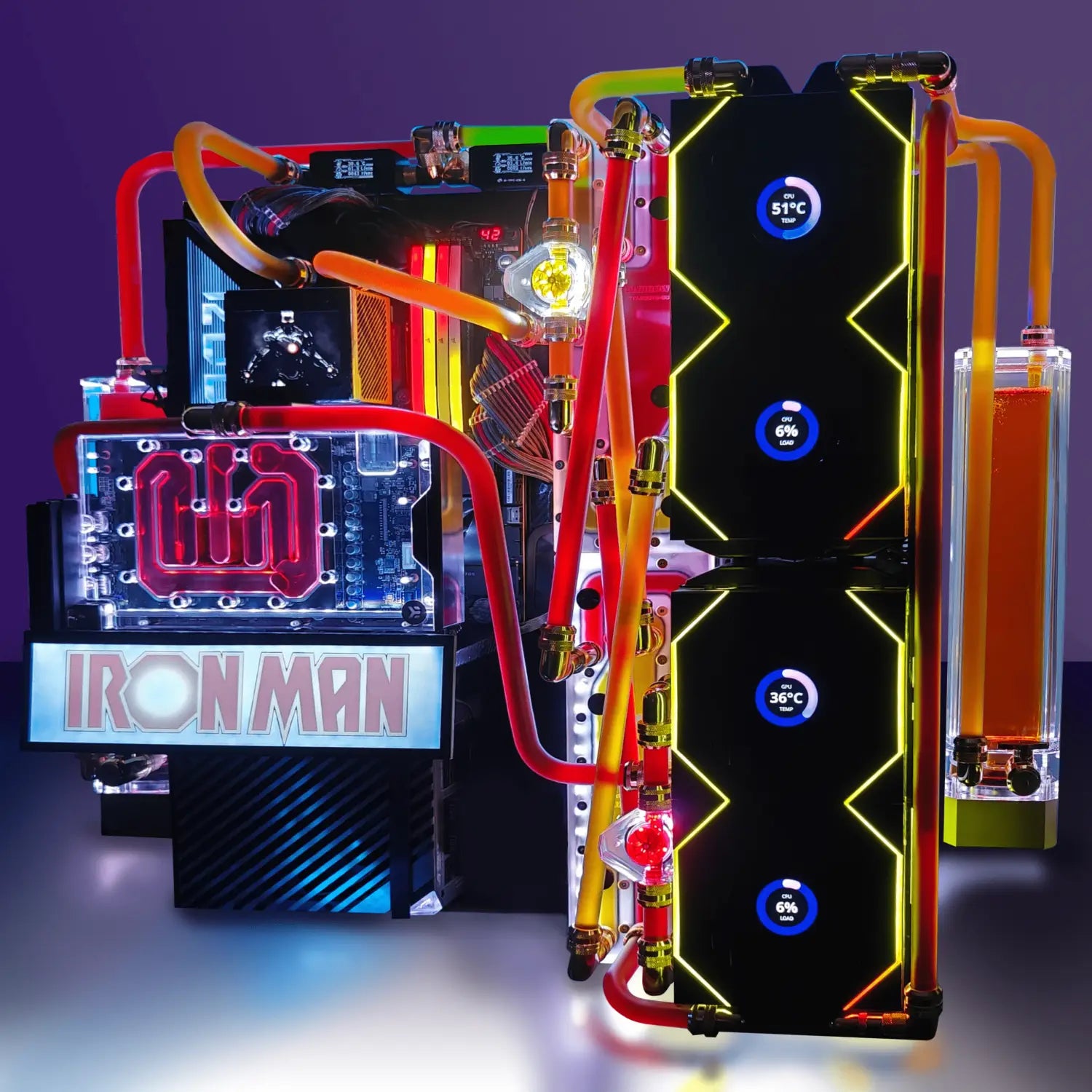
The Evolution of Multi GPU Technology
Share
In today’s rapidly evolving computer hardware landscape, multi-GPU technology is emerging as a powerful solution for gamers, content creators, and professionals seeking to unlock unprecedented graphics performance. Driven by the growing demand for high-resolution gaming, realistic 3D rendering, and advanced AI workloads, this approach offers a scalable method for efficient graphics processing and enhanced system responsiveness.
This comprehensive guide delves into the intricacies of multi-GPU technology by exploring its history, various implementations, and both the advantages and limitations inherent in this advanced computing approach. Whether you are a seasoned hardware enthusiast or new to high-performance computing, you will gain valuable insights into how multi-GPU configurations can elevate your graphics performance and enable smoother, more demanding workflows.
The Evolution of Multi-GPU Technology
The concept of leveraging multiple GPUs for enhanced system performance has been refined over several decades. Emerging from the early days of the personal computer revolution, manufacturers harnessed the parallel processing capabilities of GPUs to address increasingly complex computational tasks. Early innovations like NVIDIA's Scalable Link Interface (SLI) in the early 2000s enabled users to combine two or more graphics cards, offering substantial boosts in gaming performance and visual fidelity.
Around the same period, AMD introduced its own multi-GPU solution, CrossFire, which catered to a different market segment while employing similar underlying principles. Over time, both NVIDIA and AMD have continued to refine their technologies, integrating new features and addressing earlier limitations to meet modern performance demands.
Understanding the Types of Multi-GPU Technologies
Modern computing offers several distinct multi-GPU technologies tailored to boost system performance. These solutions enhance the overall graphics processing power by merging the capabilities of multiple GPUs into one cohesive system.
NVIDIA SLI (Scalable Link Interface)
NVIDIA's SLI technology has been a cornerstone for high-performance gaming, enabling users to combine compatible NVIDIA GeForce GPUs to significantly enhance frame rates and visual detail, especially in 4K and high-refresh-rate scenarios. This approach offers a tangible increase in rendering power for those seeking to push their gaming and creative boundaries.
AMD CrossFire
Similarly, AMD’s CrossFire technology allows users to link multiple Radeon GPUs to boost graphics performance. With its unique set of features and optimizations, CrossFire presents an alternative pathway for achieving enhanced visual quality and superior system responsiveness under demanding applications.
Modern Multi-GPU Technologies
Recent innovations have further expanded the capabilities of multi-GPU technology. Solutions such as NVIDIA's NVLink offer high-speed interconnects that enable smooth communication between multiple high-end GPUs, while modern APIs like DirectX 12 and Vulkan empower developers with explicit multi-GPU control. Additionally, technologies like DirectML open new possibilities in machine learning and AI-powered applications, ensuring that multi-GPU setups remain at the forefront of graphics processing and computational performance.
How Multi-GPU Setups Work
Multi-GPU setups distribute computational workloads across several graphics processing units, harnessing their parallel processing strengths to accelerate rendering tasks. This approach allows systems to handle highly detailed graphics and complex algorithms more efficiently.
1. Alternate Frame Rendering (AFR)
In Alternate Frame Rendering (AFR), each GPU takes turns rendering consecutive frames. This method can effectively double the frame rate in gaming scenarios, providing smoother motion and responsive controls without sacrificing visual quality.
2. Split Frame Rendering (SFR)
Split Frame Rendering (SFR) divides the rendering of a single frame among multiple GPUs. This technique can be particularly advantageous for applications like video editing and scientific simulations, where distributing the workload evenly leads to improved efficiency and performance. The advent of Explicit Multi-GPU support in modern APIs further refines this process by allowing fine-tuned control over each GPU’s responsibilities.
Advantages of Multi-GPU Technology
Multi-GPU technology offers significant enhancements in graphics performance by combining the processing power of several GPUs. Users experience higher frame rates, elevated image fidelity, and the capability to manage demanding workloads such as intricate 3D rendering and 4K gaming. In addition, pooling the available VRAM across multiple units enables the handling of large textures and high-resolution assets, a critical benefit for video editing, 3D modeling, and other memory-intensive tasks.
Increased Graphics Performance
By merging the capabilities of multiple GPUs, users can enjoy a substantial increase in graphics processing power, leading to enhanced visual quality and smoother interactive experiences in both gaming and professional applications.
Enhanced VRAM Capacity
With multiple GPUs, the combined VRAM permits more extensive data handling, supporting larger and more detailed assets needed for high-resolution graphics and professional-grade creative projects.
Benefits for Non-Gaming Applications
Beyond gaming, professionals in areas such as video editing, computer-aided design (CAD), artificial intelligence, and scientific computing benefit from the increased computational power and hardware acceleration provided by multi-GPU configurations. This technology helps streamline demanding workflows and improves overall efficiency.

Limitations and Disadvantages of Multi-GPU Technology
While multi-GPU setups deliver remarkable performance benefits, they also present specific challenges. Game compatibility is a known issue, as not every title is optimized to utilize multiple GPUs—and in some cases, performance may be less than optimal due to micro-stuttering or input lag. Moreover, establishing a multi-GPU system necessitates a robust hardware foundation, including specialized motherboards, premium power supplies, and advanced cooling solutions. Higher power consumption and increased heat generation require careful management to maintain system stability and longevity.
Hardware Considerations for Multi-GPU Setups
Building an effective multi-GPU system calls for attention to several critical hardware components. The motherboard must be equipped with sufficient PCIe slots and support the specific multi-GPU technology—whether NVIDIA SLI or AMD CrossFire—while a high-quality, high-wattage power supply is essential to sustain the cumulative energy demands. Also, advanced cooling solutions, ranging from efficient air-based systems to sophisticated liquid cooling, help counteract the increased thermal output, ensuring optimal performance and system longevity.
Benchmarking Multi-GPU Setups
Accurately assessing the benefits of a multi-GPU system is crucial, and a variety of benchmarking tools are available to measure its performance. Popular tools such as 3DMark, Unigine Heaven, and Unigine Superposition test overall system stability and graphics output by evaluating frame rates, rendering quality, and computational efficiency. Additionally, specialized utilities like NVIDIA's Frame Capture Analysis Tool and AMD's Radeon GPU Profiler assist in fine-tuning frame pacing, helping to deliver a consistently smooth experience.
The Future of Multi-GPU Technology
The future of multi-GPU technology is filled with promise, as ongoing innovations continue to push performance and efficiency boundaries. Advances in high-speed interconnects, explicit multi-GPU support in modern APIs, and emerging features like DirectML highlight a commitment to leveraging parallel GPU processing for advanced applications such as machine learning and AI. Enhanced power efficiency and improved thermal management are paving the way for more compact, energy-efficient multi-GPU systems that will benefit both gamers and professionals alike.
Conclusion
Multi-GPU technology represents a transformative evolution in computer hardware, offering a pathway to exceptional graphics performance and advanced computational capabilities. From the pioneering days of NVIDIA SLI and AMD CrossFire to today’s sophisticated implementations featuring NVLink and Explicit Multi-GPU support, this technology continues to redefine the potential of high-performance systems. For gamers, content creators, and professionals alike, harnessing the power of multiple GPUs means enjoying higher frame rates, improved visual quality, and the ability to efficiently manage demanding workloads. As hardware and software innovations progress, embracing multi-GPU setups will keep users at the forefront of technological advancement and unlock a world of new possibilities.
